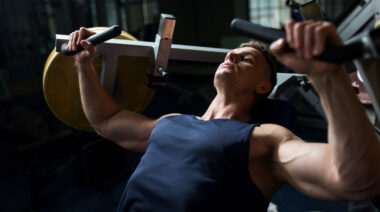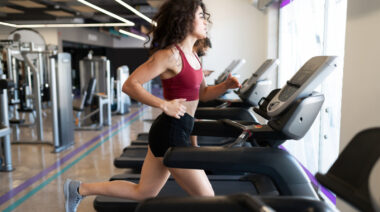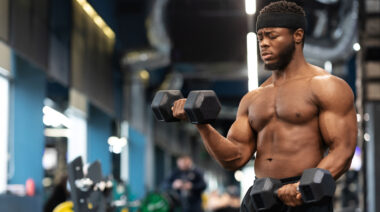Ask any kettlebell sport athlete what the single most important aspect of success in the sport is, and you will probably receive the same answer: efficiency. I often see beginners approach the kettlebells with bravado, only to be beaten down and handed a bruised ego. Even strong individuals find kettlebell sport lifting painful, frustrating, and downright impossible in the beginning. That’s because they lack efficiency. Brute strength won’t get you far in this sport.
Ask any kettlebell sport athlete what the single most important aspect of success in the sport is, and you will probably receive the same answer: efficiency. I often see beginners approach the kettlebells with bravado, only to be beaten down and handed a bruised ego. Even strong individuals find kettlebell sport lifting painful, frustrating, and downright impossible in the beginning. That’s because they lack efficiency. Brute strength won’t get you far in this sport.
Efficiency is King
Every sport requires efficiency, but none more than kettlebell sport. The athlete’s task is to hoist spheres of steel continuously for ten minutes, aiming to achieve the highest possible amount of legal reps.
Every sport requires efficiency, but none more than kettlebell sport.
Here is an example: Denis Vasiliev, Master of Sport International Class in the 85kg bodyweight category, set a new record in the long cycle earlier this year. He successfully achieved 100 reps lifting two 32kg kettlebells. This required him to clean and jerk continuously, pausing or placing the bells on the ground, in a ten-minute time frame, shifting 6,400kg in total.
Another example: Ksenia Dedyukhina, Honoured Master of Sport of Russia, last year snatched the 24kg kettlebell for 200 reps in the 64kg bodyweight category, lifting a total of 4,800kg. Once again, this was done in a ten-minute time frame without pauses and only changing hands once.
“Even strong individuals find kettlebell sport lifting painful, frustrating, and downright impossible in the beginning. That’s because they lack efficiency.”
These feats would not be possible without supreme efficiency. To achieve that level of skill, the athlete needs to hone and refine his or her technique. Breathing patterns must be understood and practiced until natural, and the body must be conditioned to relax under the weight of the bells.
Eating the Elephant Chunk by Chunk
Volumes could be written to analyse every aspect of efficiency, but we needn’t let the size of the task get in our way. As the saying goes, “You need to eat an elephant chunk by chunk.” So today, I would like to begin the process of breaking down and analysing each lift by looking at one exercise, the jerk. Specifically, we will examine the rack portion of the jerk.
In the rack position, the kettlebells rest on the lifter’s body. This is the position where most of the recovery time is spent, so it is important to place as little strain as possible on the lifter’s muscles to maintain it.
Please note: all men currently compete using two kettlebells, whilst women can choose to compete either with two kettlebell or just one. The same technical elements apply to both versions of the lifts.
Hands, Wrists, Forearms, and Elbows
- The athlete’s hands need to be deeply inserted in the kettlebell handles.
- The handle should rest diagonally on the palm of the hand, making contact with the thumb’s webbing and the heel of the hand.
- At no point should the wrists be in a bent position, as this will lead to poor performance and injury.
- The body of the kettlebell should rest on the forearms and biceps. In the two-arm version of the lift, the kettlebell handles should overlap, resting on top of each other.
- The lifter’s elbows should rest on the abdominal region, ideally the hips, making contact with the iliac crest. To achieve this, the thoracic spine needs to be flexed and relaxed and the pelvis pushed forward.
This position isn’t always easy to achieve, sometimes due to tight hip flexor muscles, other times due to mobility issues of the back and spine. Often it’s a combination of both. It is important for the lifter to work on hip flexibility and spine mobility to achieve good contact between the elbows and the hips/body. Being unable to do so will result in unwanted strain on the shoulders, forearms, and back.
Knees
In the rack position, the knees should be locked out. If the knees are bent, the quads won’t be able to relax. This means the lifter will spend energy to simply keep the kettlebell in position.
Feet
Another important aspect of the rack position is the weight distribution of the feet. Many novice athletes experience discomfort and burning in their feet during long-cycle and jerk sets. This happens when the weight of the lifter’s body, combined with that of the kettlebells, rests excessively on the forefoot. Ensuring that the weight is distributed mainly on the heels and the outside of the feet should eliminate any burning or cramping sensation.
Breath
Last but not least, there is the small matter of breathing. Looking at a kettlebell sport athlete in the rack position can make you wonder: “How does he or she actually breathe?” With the weight of the kettlebells placing the athlete’s upper body in a forward flexed position, it is nearly impossible to take deep belly breaths that cause the ribcage to rise and fall.
What the lifter needs to do is to breathe through the back. This involves learning to expand the ribcage whilst the thoracic spine is flexed. The best way to learn this technique is to simply get the bells into rack and hold them there for time whilst focusing on your breathing. I call these “rack meditations.”
The body of the kettlebell should rest on the forearms and the biceps.
Stay Patient to Become Proficient
The rack position is just one small part of the jerk. As you can see, there are many elements to learn and practice. It can feel daunting initially, but the depth of technical knowledge and proficiency needed to be able lift successfully is what makes kettlebell sport so interesting.
Next time we shall analyse the jerk itself, so keep an eye out for the second instalment.
More Like This:
- Kettlebell Sport: What It Is and How To Get Started
- 7 Reasons Kettlebell Sport Is For Everybody
- The Beauty of Suffering in Kettlebell Sport
- New on Pulse Beat Fit UK Today
Photo 1 courtesy of Laurence Clemente.
Photo 2 courtesy of Sergey Merkulin.






